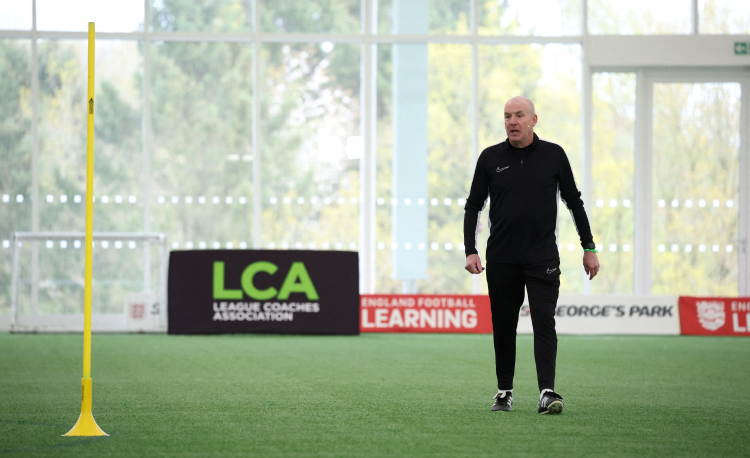Motivational posters
Sports PsychologyDan Abrahams
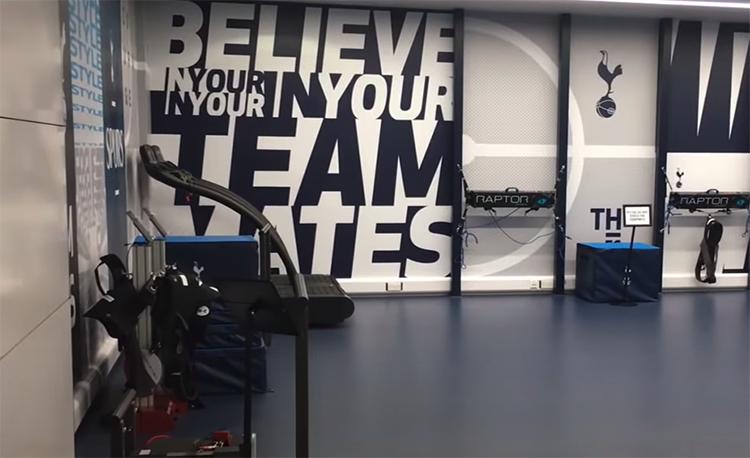
Whenever I’ve worked at, consulted with, or simply visited the training grounds of professional football clubs there’s one consistency that ties them together. One feature always appears the same. Motivational posters!
The timeless wisdom of Michael Jordan, the powerful words of Serena Williams, the belief-dripping phrases of Muhammad Ali.
I get it! Who wants to lift weights, engage in prehab, or change into kit with whitened blank walls that inspire nothing but a new paint job. I really get it. So, I’d never ask you to take down your posters of passion and perseverance. But I’m going to act the agitator here and suggest new murals and novel banners. Be bold, be brave and throw up a different brand of wall message – alternative stories for players to appreciate.
How about these ideas. Idea one - have posters that highlight “floor” and “ceiling” behaviours – the ideal behaviours that players want to exhibit, and the maladaptive behaviours that players are striving to avoid – and make those behaviours specific: 5 minutes early vs 5 minutes late.
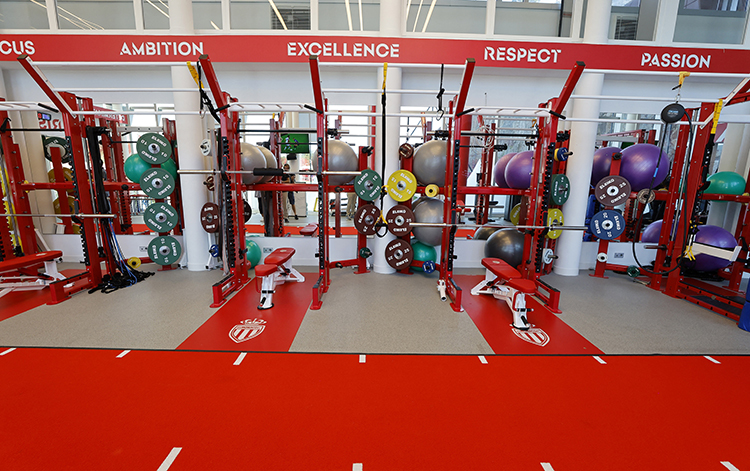
Behaviours of excellence, that’s what we’re doing here. That’s how we go about our business – in other words, that’s how we roll.
A second idea: print out your team’s best games with words accompanying pictures of excellence and celebration. Words and images that drive memories of excellence are the ones you’re looking to replicate, time and time again. For example, that great win a fortnight ago – pictures of success accompanied by words such as “dominant”, “alert”, “alive” and “lively”. Use action-based words and action-influencing words that stick in the mind – that drive positive mental pictures, and arouse feelings of certainty and expectation.
A third idea (and be patient with me here): scribe the negatives... the doubts, the worries, the anxieties that your people – your players – tend to have. Don’t be scared of this. Publishing such thoughts and feelings normalises them and humanises the daily experiences that rifle through the minds of your players.
“I had a poor training week this week, I’m not sure I’ll play well”
“I can’t believe I made that mistake, I’m playing so bad today”
“I’m just not feeling it today, I’m not having this at all”
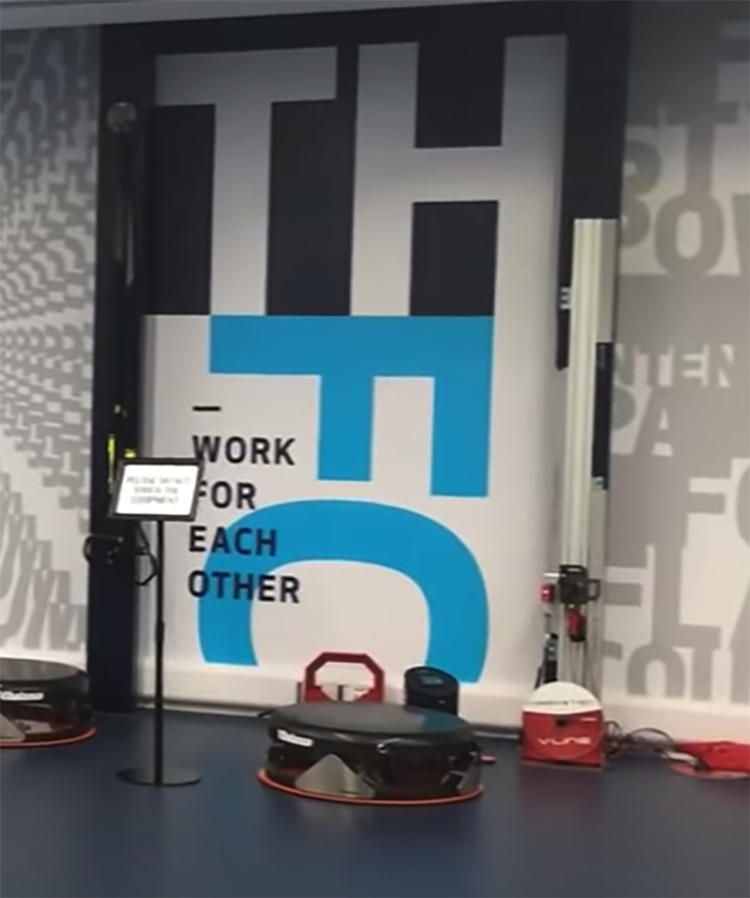
Put these types of thoughts (emotions and feelings) up in lights on your walls because it’s inevitable, really inevitable, that your players will experience them. No amount of skill in anyone’s feet inoculates them from doubt nor worry nor anxiety. They are human qualities that transcend ability and capability. So pen them on your walls and make sure your players know that everything about your coaching practice, and everything about your coaching process, is designed to help them overcome, play with, or play through such human experiences.
Idea number four is to script the controllables – the specific actions players need to execute if they’re going to give themselves their best chance of a positive result.
The key word here is “controllable”. Players tend to think generally and not in specifics or controllables. Strikers think about scoring rather than the things they have to do to score. Defenders think about keeping a clean sheet rather than the things they have to do to keep a clean sheet.
Graffiti your walls with specifics and controllables. Actions and tasks that players can choose to do. Actions and tasks that are critical essentials in order to carry out their job on the pitch.
This leads to idea number five: capitalise and italicise the mindset. Make mental techniques big and bold and bright on your walls. Have players write them and draw them and make them standout. They should be seen at all times, they should never be ignored.
“We pay attention every single second – next action, next action”
“We retain a strong intensity irrespective of the score”
“We execute every action and every movement positively, no matter the pressure”
Individual ambition and team identity. These should fill your walls, more so than pledges of excellence from sporting characters in the past.
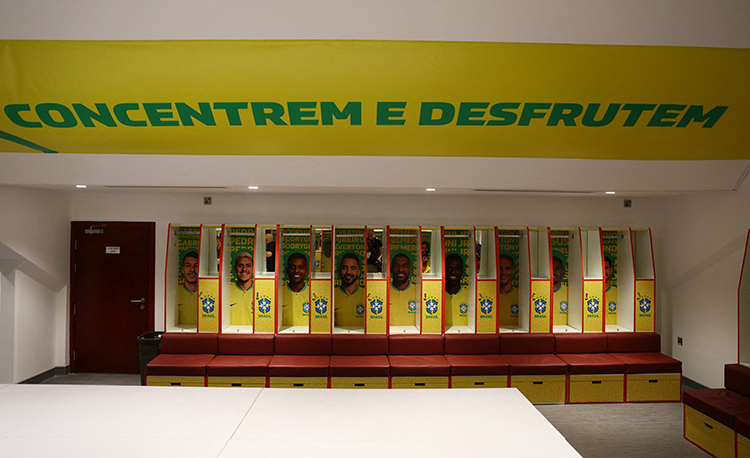
Be bold, be brave and tear down your motivational posters. They’re gripping at first, but garner a sense of the vacuous over time. They have little to do with you, they have little to do with your players.
Make your posters personal. Fill them with positive memories, exciting imaginative predictions, and useful and humane perceptions of the challenges of the moment. Make them about you and your players and your team and your organisation.
Be bold and be brave. Tear down your motivational posters. It’s not the inspiration of others that counts, it’s the meaningful experiences that you and your players encounter that matter.
The timeless wisdom of Michael Jordan, the powerful words of Serena Williams, the belief-dripping phrases of Muhammad Ali.
I get it! Who wants to lift weights, engage in prehab, or change into kit with whitened blank walls that inspire nothing but a new paint job. I really get it. So, I’d never ask you to take down your posters of passion and perseverance. But I’m going to act the agitator here and suggest new murals and novel banners. Be bold, be brave and throw up a different brand of wall message – alternative stories for players to appreciate.
How about these ideas. Idea one - have posters that highlight “floor” and “ceiling” behaviours – the ideal behaviours that players want to exhibit, and the maladaptive behaviours that players are striving to avoid – and make those behaviours specific: 5 minutes early vs 5 minutes late.

Behaviours of excellence, that’s what we’re doing here. That’s how we go about our business – in other words, that’s how we roll.
A second idea: print out your team’s best games with words accompanying pictures of excellence and celebration. Words and images that drive memories of excellence are the ones you’re looking to replicate, time and time again. For example, that great win a fortnight ago – pictures of success accompanied by words such as “dominant”, “alert”, “alive” and “lively”. Use action-based words and action-influencing words that stick in the mind – that drive positive mental pictures, and arouse feelings of certainty and expectation.
A third idea (and be patient with me here): scribe the negatives... the doubts, the worries, the anxieties that your people – your players – tend to have. Don’t be scared of this. Publishing such thoughts and feelings normalises them and humanises the daily experiences that rifle through the minds of your players.
“I had a poor training week this week, I’m not sure I’ll play well”
“I can’t believe I made that mistake, I’m playing so bad today”
“I’m just not feeling it today, I’m not having this at all”

Put these types of thoughts (emotions and feelings) up in lights on your walls because it’s inevitable, really inevitable, that your players will experience them. No amount of skill in anyone’s feet inoculates them from doubt nor worry nor anxiety. They are human qualities that transcend ability and capability. So pen them on your walls and make sure your players know that everything about your coaching practice, and everything about your coaching process, is designed to help them overcome, play with, or play through such human experiences.
SCRIPT THE CONTROLLABLES
Idea number four is to script the controllables – the specific actions players need to execute if they’re going to give themselves their best chance of a positive result.
The key word here is “controllable”. Players tend to think generally and not in specifics or controllables. Strikers think about scoring rather than the things they have to do to score. Defenders think about keeping a clean sheet rather than the things they have to do to keep a clean sheet.
Graffiti your walls with specifics and controllables. Actions and tasks that players can choose to do. Actions and tasks that are critical essentials in order to carry out their job on the pitch.
“Make your posters personal. Fill them with positive memories, imaginative predictions, and humane perceptions of the challenges of the moment”
This leads to idea number five: capitalise and italicise the mindset. Make mental techniques big and bold and bright on your walls. Have players write them and draw them and make them standout. They should be seen at all times, they should never be ignored.
“We pay attention every single second – next action, next action”
“We retain a strong intensity irrespective of the score”
“We execute every action and every movement positively, no matter the pressure”
Individual ambition and team identity. These should fill your walls, more so than pledges of excellence from sporting characters in the past.

Be bold, be brave and tear down your motivational posters. They’re gripping at first, but garner a sense of the vacuous over time. They have little to do with you, they have little to do with your players.
Make your posters personal. Fill them with positive memories, exciting imaginative predictions, and useful and humane perceptions of the challenges of the moment. Make them about you and your players and your team and your organisation.
Be bold and be brave. Tear down your motivational posters. It’s not the inspiration of others that counts, it’s the meaningful experiences that you and your players encounter that matter.
Editor's Picks
Attacking transitions
Jesse Marsch
Deep runs in the final third
Fabian Hürzeler
Using the goalkeeper in build-up play
Ralph Hasenhüttl
Intensive boxes drill with goals
Andoni Iraola
Penetrating the final third
Ange Postecoglou
Creating and finishing
Pep Guardiola
My philosophy
Sir Alex Ferguson
Pressing initiation
Mauricio Pochettino
Compact team movement
Roberto Martinez
Coaches' Testimonials

Alan Pardew

Arsène Wenger

Brendan Rodgers

Carlos Carvalhal

José Mourinho

Jürgen Klopp

Pep Guardiola

Roy Hodgson

Sir Alex Ferguson

Steven Gerrard
Related
Paul Heckingbottom and Stuart McCall
Principles in possession
Steven Schumacher
Counter-attacking
Liam Bramley
Counter-attacking on transitions
Coaches' Testimonials

Gerald Kearney, Downtown Las Vegas Soccer Club

Paul Butler, Florida, USA

Rick Shields, Springboro, USA

Tony Green, Pierrefonds Titans, Quebec, Canada
Join the world's leading coaches and managers and discover for yourself one of the best kept secrets in coaching. No other training tool on the planet is written or read by the calibre of names you’ll find in Elite Soccer.
In a recent survey 92% of subscribers said Elite Soccer makes them more confident, 89% said it makes them a more effective coach and 91% said it makes them more inspired.
Get Monthly Inspiration
All the latest techniques and approaches
Since 2010 Elite Soccer has given subscribers exclusive insight into the training ground practices of the world’s best coaches. Published in partnership with the League Managers Association we have unparalleled access to the leading lights in the English leagues, as well as a host of international managers.
Elite Soccer exclusively features sessions written by the coaches themselves. There are no observed sessions and no sessions “in the style of”, just first-hand advice delivered direct to you from the coach.




